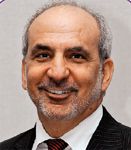Future of therapy looks bright
An evolution in glaucoma therapy is underway, shifting from a reliance solely on medication and surgery, to a greater understanding of disease pathology and risk factors in the conversion of ocular hypertension to glaucoma.

Amid these developments, medical therapy remains the mainstay of glaucoma therapy. Although it's presently a fallow period for significant changes, one noticeable trend is the introduction of non-preserved agents, said Dr. Fingeret, who is chief, optometry section, Veterans Administration New York Harbor Health Care System, and clinical professor, State University of New York College of Optometry.
Preservative-free formulas
Tafluprost is the first preservative-free prostaglandin analog. Dorzolamide hydro-chloride-timolol maleate is a fixed combination containing a carbonic anhydrase inhibitor and beta-adrenergic receptor blocking agent.
"The question is whether this a leap forward in terms of efficacy, and we really don't know yet," he said. Tafluprost is expected to be comparable in IOP-lowering efficacy to other prostaglandins, with fewer effects on the ocular surface.
A plus for compliance?
Dr. Fingeret noted that both new drugs are packaged in unit doses, with the cost and "hassle" of using single-dose vials potentially influencing patient compliance.
"If they have enough motivation, patients will use them, while others may not want to," Dr. Fingeret said. "One potential ad-vantage is in having one vial for each day; this will prevent patients from using too many drops and running out before the month is out."
Generic effects
The release of generic versions of widely used glaucoma medications is also having an impact on eye care. Latanoprost (Xalatan, Pfizer) was the latest to become available in generic formulations. Attempting to clear up confusion, Dr. Fingeret explained that generic ophthalmic solutions are expected to have the same active and inactive ingredients in the same concentrations as the branded products. If they are not the same, a study of clinical bioequivalence must be performed.
Generic drugs are also less costly than branded products, and latanoprost appears to be similar to the name brand product in regard to IOP reduction, he said.
Newsletter
Want more insights like this? Subscribe to Optometry Times and get clinical pearls and practice tips delivered straight to your inbox.